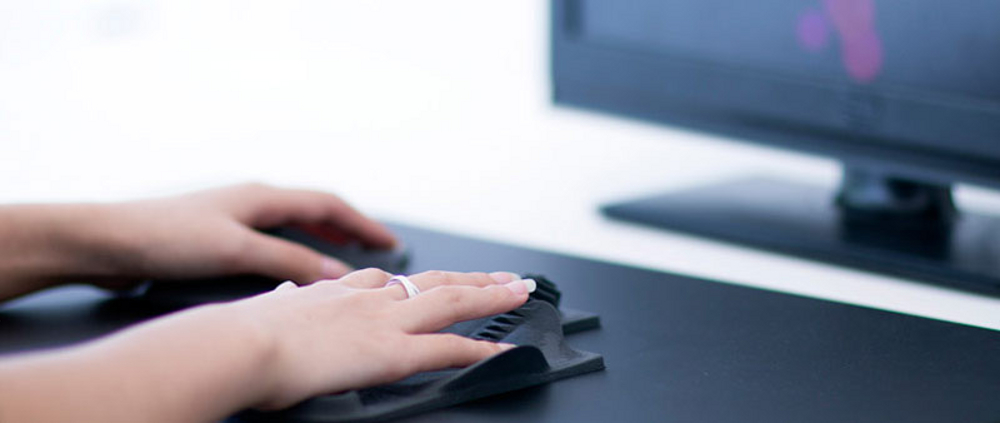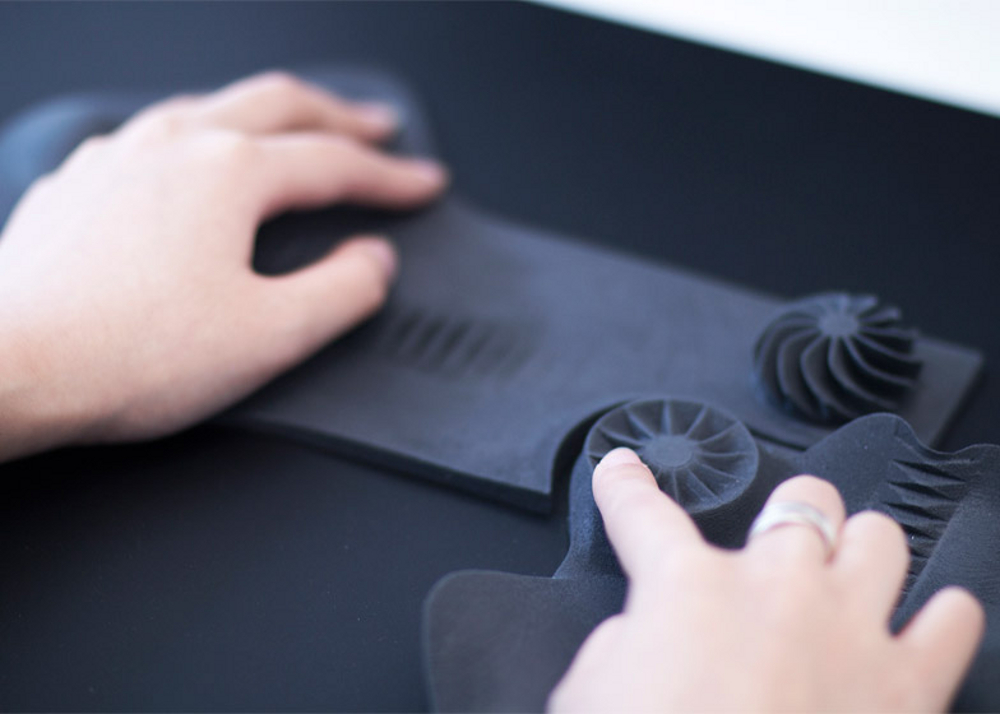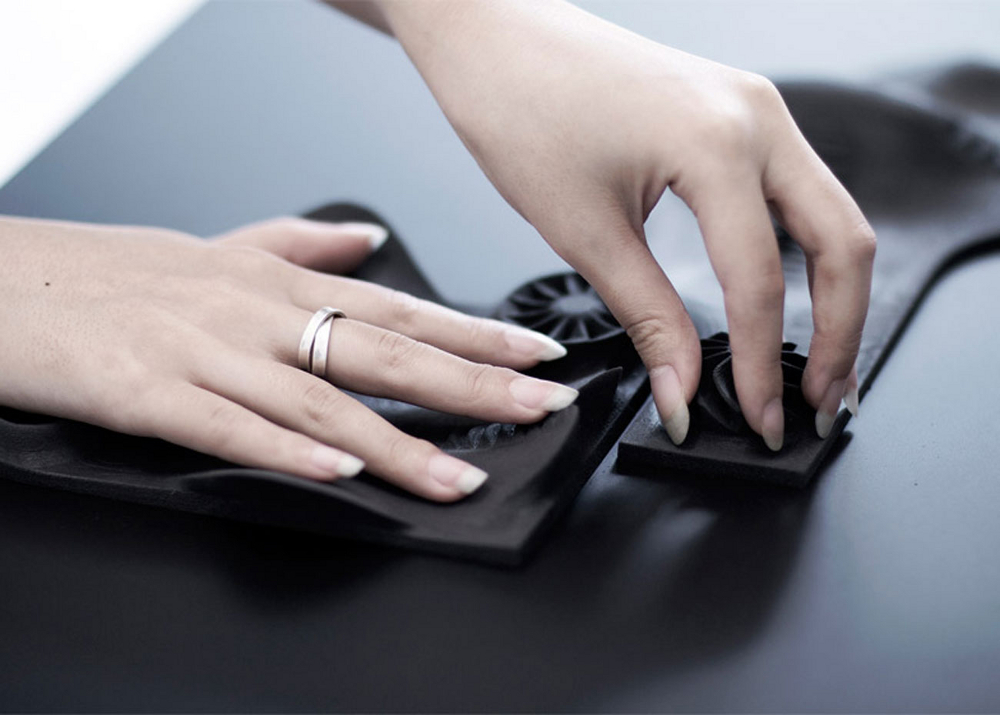Everyone came accross a specific question at least once in a lifetime: “What will the future be like?”.
Quite often the answer comes from the world of design, the only one capable of giving us a glimpse of tomorrow, not just in a romantic way, but analysing dynamics and issues of today and projecting solutions not only based on aesthetic sense.
If you ever practiced with drawing softwares and computer aided design (CAD) environment, you’ve probably been through hard times memorizing and rearranging tool palettes all over the screen just to fit the working area to your needs, to better translate your visions into digital objects.
Well it looks like it’s not going to be like this forever, since Ming Kong, Royal College of Art of London graduate, stepped on the scene.
For his Interfacet Project, presented at the annual Show RCA 2015 he actually developed a conductive elastic material that could be moulded into any desired shape to obtain a touch-sensitive interface in order to be used for digital modelling.
This means that in the near future we will be able to manipulate digital objects by swiping our fingers on certain areas of these three dimensional trackpads, capable of giving a response based on the pressure applied; this will make rotating, zooming, drawing and much more easier than ever before, not to mention the precision achievable while working with visual effects in general.
It seems we are on the verge of a new computational era, based on actual physical interaction, where the operator and the machine could get in touch “feeling” each other.
Digital modelling will not be the only field affected by this new technology. As Kong reported when interviewed on Dezeen: “The most interest I’ve had is from car interior designers and car companies.”, but we could bet on a fast spreading of his ideas.
It takes very short time to come up with a new possible application of Kong’s technology, that seems to be limitless at this point.
While most of us will be imaging new ways of development, quite surely another designer is meditating on how to take it to the next level, to take the world one step further toward the future.
Text by Samuel Giannotte
Photo courtesy of Royal College of Art, London














